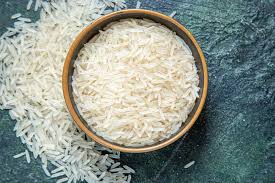US Rice Contains Highest Arsenic Levels; Indian Basmati and Thai Jasmine Among Safest, Reveals New Study
By Lokmat English Desk | Updated: July 3, 2025 11:38 IST2025-07-03T11:37:25+5:302025-07-03T11:38:10+5:30
In a recent report by Healthy Babies Bright Futures, a nonprofit dedicated to reducing children’s exposure to harmful chemicals ...

US Rice Contains Highest Arsenic Levels; Indian Basmati and Thai Jasmine Among Safest, Reveals New Study
In a recent report by Healthy Babies Bright Futures, a nonprofit dedicated to reducing children’s exposure to harmful chemicals it has been found that rice sold in the United States has been found to contain some of the highest levels of inorganic arsenic — a toxic heavy metal linked to cancer and developmental issues. In contrast, rice varieties imported from India and Thailand, including Indian basmati and Thai jasmine rice, were among those with the lowest arsenic levels. The findings of the report, titled ‘What’s in your family’s rice?’, are particularly worrying especially for people who consume rice regularly including pregnant women and young children.
Margaret Karagas, a professor of epidemiology at Dartmouth’s Geisel School of Medicine. However, noted that there are practical ways to reduce arsenic exposure from rice. The researchers behind the report tested 145 rice products purchased through Amazon and retail chains like Trader Joe’s, Safeway, Costco, and Target. The samples included rice grown in the US as well as imports from various countries. They also tested other grains such as quinoa, farro, couscous, and spelt for comparison.
All rice samples contained inorganic arsenic — the most toxic form of the metal. Shockingly, around one-third of these samples surpassed the FDA’s safety limit for arsenic in infant rice cereals. On average, the arsenic levels in rice were 28 times higher than those found in the other grains tested.Brown rice was found to contain more arsenic than white rice due to its outer layers — the bran and germ — where the metal tends to accumulate. Among the rice varieties tested, arborio rice from Italy and white and brown rice from the southeastern US showed the highest concentrations of arsenic. However, the lowest levels were found in white rice from California, jasmine rice from Thailand, and basmati rice from India.
The variations in arsenic content stem from environmental factors. “It’s mainly because of the amount of arsenic in the soil and water,” said Felicia Wu, professor of food safety and risk assessment at Michigan State University, US. Rice plants are particularly susceptible to absorbing arsenic due to their growth in water-flooded paddies, she added, as quoted by The New York Times. Brown rice generally contains more arsenic because its outer layers remain intact after harvesting. This contrasts with white rice, which has those layers removed. There is no known safe level of arsenic exposure,” said Karagas of Dartmouth’s Geisel School of Medicine.
The most serious risks are for fetuses and young children, as arsenic can hinder growth and cognitive development. Infants and toddlers often consume rice cereals and snacks in significant quantities, making them especially vulnerable.Adults aren’t immune either. Long-term, low-level exposure can increase the risk of heart disease, Type 2 diabetes, and various cancers. While arsenic is naturally present in the environment — including soil, air, and water — there are steps individuals can take to reduce their exposure by subsituting rice with oats , millet, barley, or quinoa, especially in baby foods. Cooking rice in excess water is another option for instance like in pasta where draining water can reduce arsenic levels by up to 60 per cent, according to the FDA. If possible, test your water sources, if you rely on a private well, have it tested for arsenic. Consider installing a reverse osmosis filtration system if levels are high.